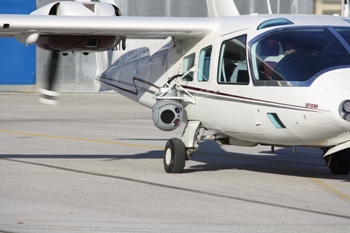Apr 12 2013
Selex ES, a Finmeccanica company, is pleased to present the Light ISR system, a readily-available answer to the growing demand for low-cost airborne surveillance assets.

The Light ISR system comprises the ATOS Lightweight, a de-scaled version of Selex ES’s best-in-class ATOS mission system, integrated on-board the light and versatile Skycar aircraft produced by Italian firm Omasud. The end result is a new, affordable surveillance asset that can fulfill the requirements of maritime and overland missions.
The ATOS Lightweight is available in multiple configurations, giving it the flexibility to meet all types of requirements, and can be easily installed and removed from a wide range of fixed and rotary wing aircraft. Omasud’s Skycar platform can be easily converted to adapt it for several different operational modes with the inherent flexibility of the system allowing for several special configurations that integrate customised sensors. These include surveillance radars such as the Selex ES Gabbiano T-20 Radar and electro optical day/night turrets such as Selex ES’s EOST 46. The Skycar’s light ISR configuration can integrate Automatic Information Systems (AIS), SAR DF and tactical communications, including line of sight and beyond line of sight data links. The aircraft’s unique design also offers a rear door that can be opened during flight to launch SAR Kits, Medi-Kits, and other mission-specific supplies.
Offering 3.5 hours of patrol time, the Light ISR system is a highly versatile and effective surveillance asset, covering a wide range of requirements for military, paramilitary, civil defence, environmental monitoring and search and rescue operations. Making use of Selex ES’s experience in Unmmaned Air Systems (UAS), the Light ISR system has also been developed with a remote mission operator variant which allows users to deploy the platform on missions without carrying a mission operator on-board in addition to the pilot. This allows the platform to carry additional fuel and payloads and for mission operators to work from a centralised mission control centre, able to support and coordinate more than one aircraft at the same time.